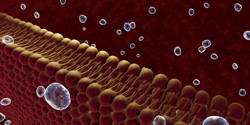Clinical applications of electroporation
Electroporation routinely facilitates in vitro gene transfection in microbiology laboratories. Recent discoveries show that electroporation can also enhance in vivo gene transfection and uptake of chemotherapeutic agents. The potential of electroporation to ablate tissues in a non-thermal mode has promoted its use for cancer treatments. The EU-funded project 'Tools and methods for in vivo electroporation' (TAMIVIVE) focused on clinical treatments based on electroporation. Depending on the number of pulses, their magnitude and duration, membrane permeabilisation induced by electroporation can be either temporary or permanent. While reversible electroporation does not compromise viability of the cell, permanent electroporation disrupts cell homeostasis, inducing cell death. Reversible electroporation is the basis for electrogenetherapy, facilitating gene delivery to cells by electric pulses. Another method, electrochemotherapy, follows the same principle, enhancing penetration of anticancer drugs into malignant cells in tissue. On the contrary, permanent electroporation is the basis of the novel non-thermal tissue ablation method. Termed non-thermal irreversible electroporation, it is used to destroy solid tumours. The project produced wide-ranging results in the field of electroporation, yielding six peer-reviewed journal publications and two patents. An ongoing collaboration with a team of clinicians addresses treating multiple liver tumour nodules by irreversible electroporation. Other applications of irreversible electroporation demonstrated in the project are pancreatic tumours ablation in mice and liquid media pasteurisation. Electrodes and microstimulators belong to a closely related area of research. As a result of this project, a patent on minimally invasive electrodes for clinical electroporation is pending. In addition, the project developed a method to perform functional electrical stimulation by means of implantable microstimulators. The many clinical applications of these electrodes include addressing complex neurological disorders such as spinal cord injury. Overall, TAMIVIVE resulted in significant advancements in the field.







